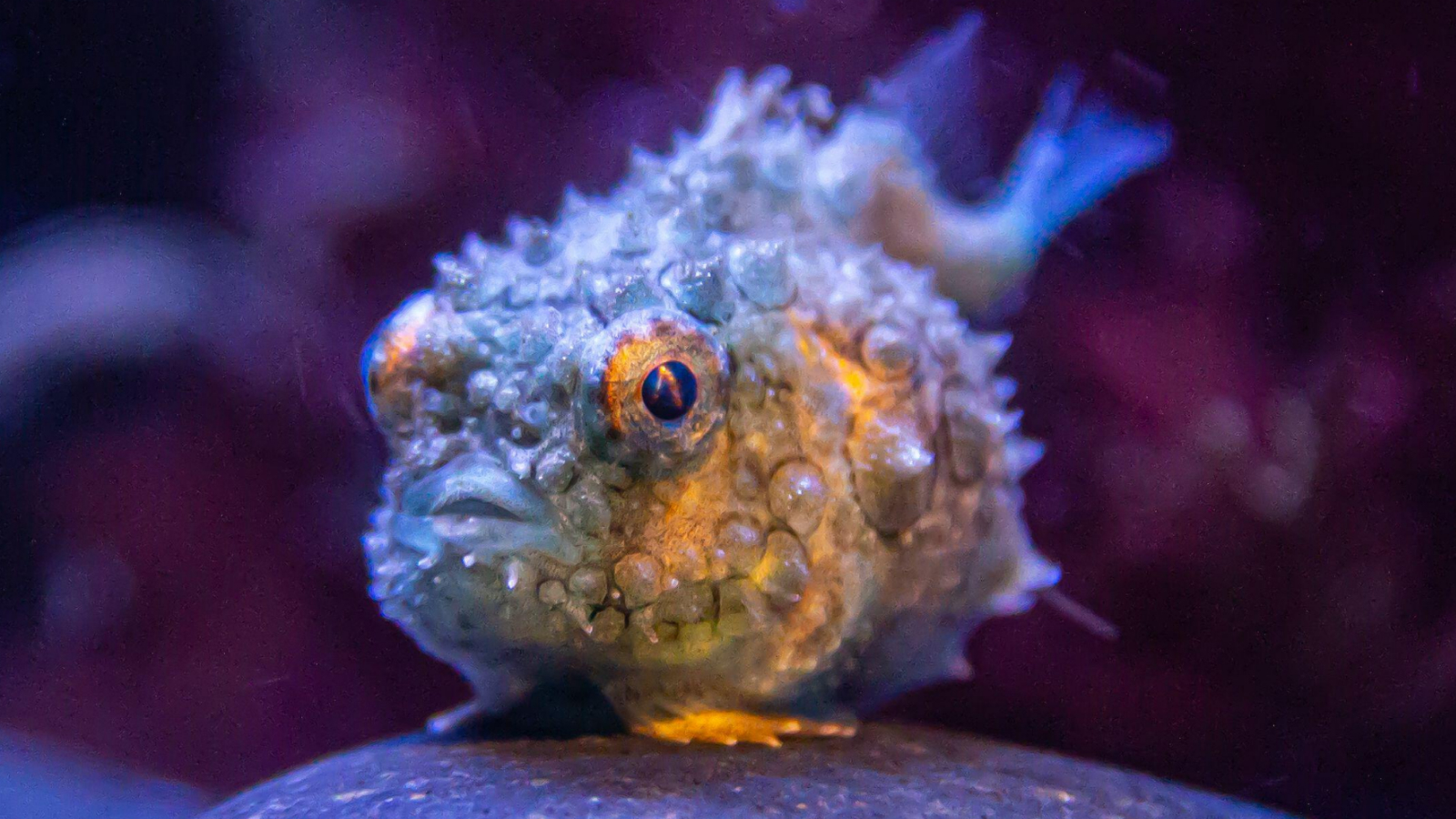Pacific spiny lumpsuckers are wee, coastal fish that look a bit like concerned strawberries, have a fluorescent glow and pack some serious body armor.
Pacific spiny lumpsuckers are undeniably some of the ocean’s cutest little creatures — their tiny, plump bodies and big, round eyes give them an almost wild kawaii charm. But despite their adorable appearance, these fish have evolved some seriously clever adaptations to survive in their coastal, often turbulent habitats.
Measuring just 1 to 3 inches (2.5 to 7.6 centimeters) long, they are the smallest members of the lumpsucker family, which includes 27 species ranging up to two feet (61 cm) in length. These relatives belong to the Scorpaeniformes order — the same group that includes the blobfish, sea robins, and stonefish, all known for their unusual and fascinating shapes.

Pacific spiny lumpsuckers have globular, almost ball-like bodies with very small fins that they flap furiously in an awkward but effective attempt to swim. Their movements are charmingly clumsy, but these fish don’t rely on swimming speed. Instead, they use their pelvic fins, which have fused into a strong suction disc on their undersides, to anchor themselves securely to rocks, coral, kelp, or even the walls of aquariums. This suction disc is their secret weapon against being swept away by powerful coastal currents and tides.
Looking at the underside of the lumpsucker’s suction disc can be a little intimidating — it resembles a lamprey’s mouth with a circular array of sharp teeth. Like human teeth, these “teeth” are made of enamel, making the disc both sturdy and somewhat fearsome. Interestingly, the disc emits a greenish-yellow glow, although scientists still aren’t sure why this bioluminescence occurs.
Sexual dimorphism adds more fascinating color to these creatures. Males tend to be red and glow bright red under ultraviolet light, while females are usually green to brown and do not fluoresce under UV rays. When it’s time to reproduce, males take on the role of protector. They stake out a territory, typically a shallow depression in warmer coastal waters, where females come to lay their eggs. After fertilizing the eggs, the female leaves, and the male stays behind to guard and care for the developing offspring, fending off predators to ensure the next generation survives.
Young lumpsuckers lack one of the key defenses adults have — rows of tough enamel bumps called odontodes that cover their bodies and their suction discs. These odontodes grow in spiral rows over time, serving as armor against predators and harsh underwater terrain. This gradual growth of protective structures helps them navigate their rocky environments more safely as they mature.
All in all, Pacific spiny lumpsuckers are a remarkable blend of cute and clever, perfectly adapted to cling tight in a world of shifting tides and powerful currents — tiny champions of the coastal waters they call home.
